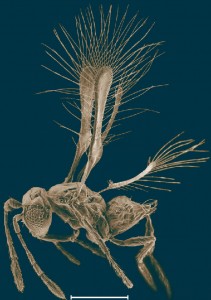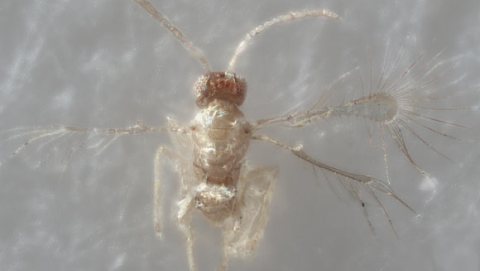The minute insect, named Tinkerbella nana, is 250 micrometers long – that’s 2.5 times the width of a human hair. Entomologists discovered Tinkerbella nana in the tropical forests of Costa Rica.
 They used methods adapted for catching extra tiny creatures, which included gently dragging a sweep net fitted with a 4 mm screen through the vegetation and then carefully searching the collected debris and extracting specimens by hand.
They used methods adapted for catching extra tiny creatures, which included gently dragging a sweep net fitted with a 4 mm screen through the vegetation and then carefully searching the collected debris and extracting specimens by hand.
“What surprised me the most was that I found so many of them,” Dr Noyes explained.
“Can you imagine finding something less than 0.2mm in a 250 ml soup of material that includes lots of plant debris and other insects up to 8 mm long. It is possibly equivalent to finding a solitary needle in 200 haystacks.”
Tinkerbella nana, described in a paper published in the Journal of Hymenoptera Research, is one of the smallest known arthropods. It belongs to the family Mymaridae that includes Kikiki huna, the smallest winged insect at 158 micrometers long.
“Tinkerbella seemed a very appropriate generic name for this particular insect. It is surprising that it has not been used before. The species name is a play on nanos, Greek for dwarf, and Nana – the name of the dog in Peter Pan.”
“This discovery really shows how diverse insect life is on this planet and how much there is to discover, especially in the tropics,” Dr Noyes said.
The discovery raises many questions about how something so small can exist in a habitat such as a tropical forest.
by Natali Anderson, www.sci-news.com

